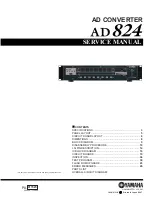
94
Function overview
Device concept
Device design:
(1)
Housing lid
(2)
Inverter
(3)
Wall bracket
(4)
Connection area incl. DC main
switch
(5)
Data communication area
(6)
Data communication cover
The inverter converts the direct current cre-
ated in the solar modules into alternating
current. This alternating current is fed into
the public grid synchronously with the grid
voltage.
The inverter has been developed exclusively for use in grid-connected photovoltaic sys-
tems; it is impossible to generate energy independently of the public grid.
Thanks to its design and the way it works, the inverter is extremely safe both to install and
to operate.
The inverter automatically monitors the public grid. In the event of abnormal grid condi-
tions, the inverter ceases operating immediately and stops feeding power into the grid (e.g.
if the grid is switched off, if there is an interruption, etc.).
Grid monitoring involves monitoring voltage, frequency and the stand-alone situation.
The inverter operates fully automatically. As soon after sunrise as there is sufficient energy
available from the solar modules, the inverter starts monitoring the grid. When insolation
has reached a sufficient level, the inverter starts feeding energy into the grid.
The inverter operates in such a way that the maximum possible amount of power is ob-
tained from the solar modules.
As soon as the power available has fallen below the level at which energy can be fed into
the grid, the inverter disconnects the power electronics completely from the grid and stops
running. It retains all its settings and stored data.
If the inverter becomes too hot, it automatically reduces the current output power in order
to protect itself.
Reasons for the inverter becoming too hot include the ambient temperature being too high
or inadequate heat dissipation (e.g. if it is installed in a switch cabinet without suitable heat
dissipation).
The Fronius 15.0 does not have an internal boost converter. This results in certain restric-
tions in the choice of solar module and string. The minimum DC input voltage (U
DC min
)
depends on the grid voltage. On the other hand, a highly optimised device is then available
for the appropriate application.
(1)
(2)
(3)
(4)
(5)
(6)
Summary of Contents for 10.0-3 480
Page 2: ...2 ...
Page 5: ...Allgemeine Informationen ...
Page 6: ......
Page 13: ...Fehler Suchhilfe ...
Page 14: ......
Page 33: ...Komponenten austauschen ...
Page 34: ......
Page 40: ...40 Gewindebuchsen in der Grundscha le tauschen 1 2 3 4 5 1 2 3 4 5 ...
Page 41: ...41 DE 6 6 ...
Page 73: ...Sicherheitstechnische Überprüfung ...
Page 74: ......
Page 86: ...86 ...
Page 89: ...General information ...
Page 90: ......
Page 97: ...Error location aid ...
Page 98: ......
Page 116: ...116 ...
Page 117: ...Changing components ...
Page 118: ......
Page 124: ...124 Replacing thread ed bushings in the base shell 1 2 3 4 5 1 2 3 4 5 ...
Page 125: ...125 EN 6 6 ...
Page 156: ...156 ...
Page 157: ...Safety Inspections ...
Page 158: ......
Page 170: ...170 ...
Page 171: ...Appendix ...
Page 176: ...176 Circuit diagrams Fronius Symo ...
Page 177: ...177 Circuit diagrams Fronius 15 0 ...
Page 178: ...178 ...
Page 179: ...179 ...
















































